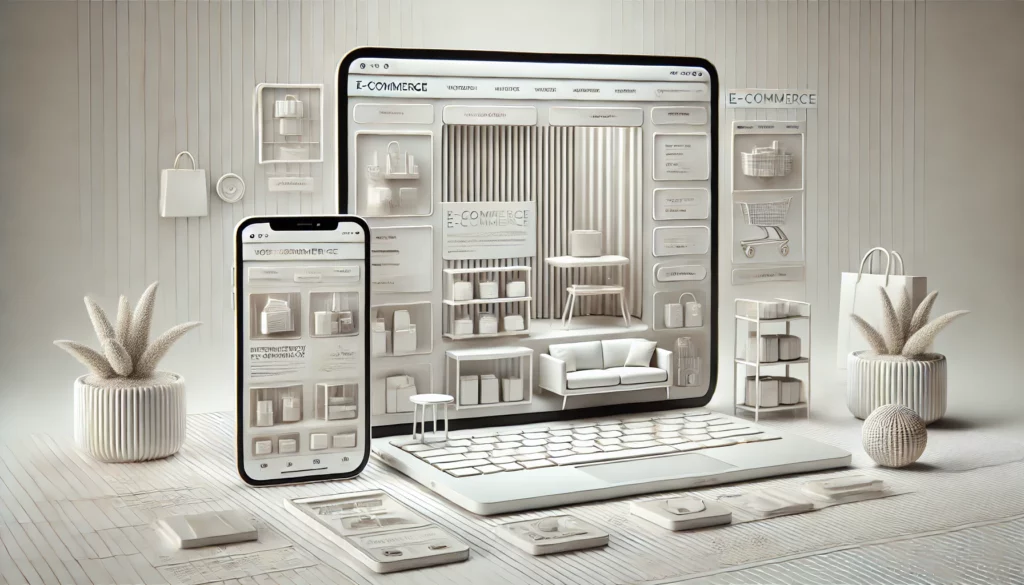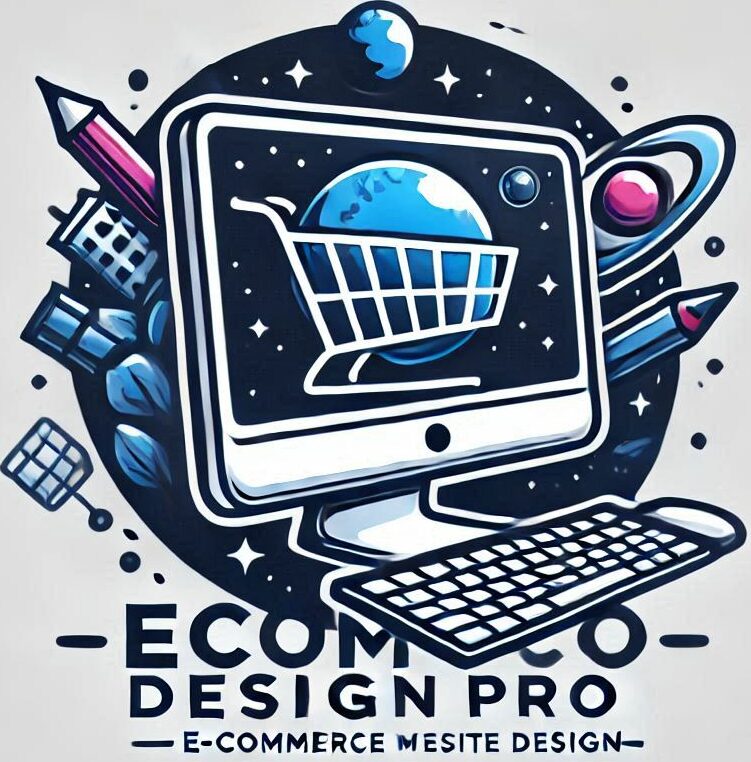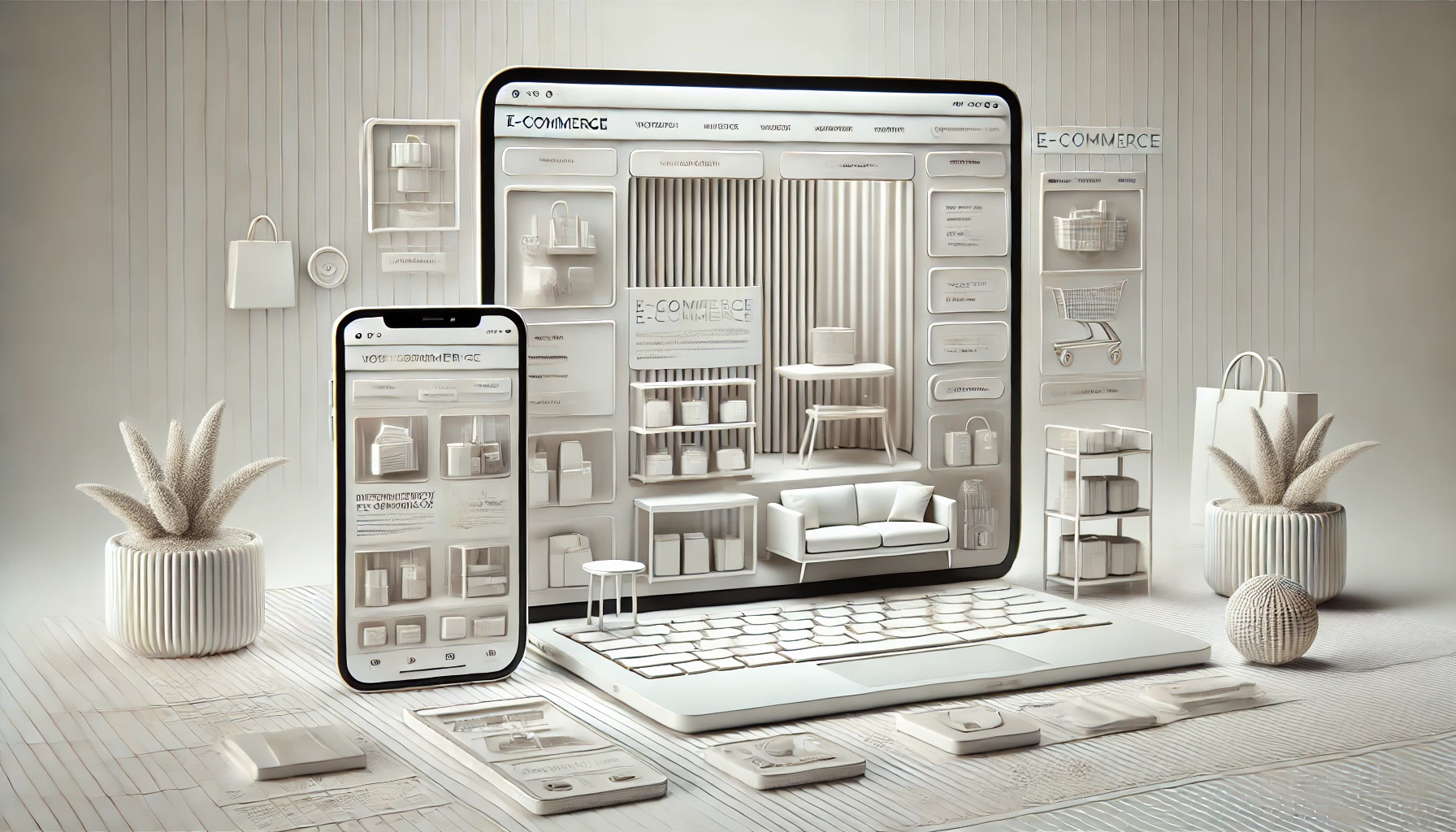
Minimalism isn’t just a buzzword; it’s a game-changer in how we perceive spaces, both physical and digital. At its core, minimalism revolves around the idea of “less is more”, focusing on simplicity, functionality, and the intentional use of space. Whether in art, design, or lifestyle choices, minimalism seeks to strip away excess to emphasize what truly matters.
The digital realm has seen a significant shift over the years. Remember those chaotic, animated websites from the early 2000s? Fast forward to today, and you’ll find many trends steering towards cleaner and more straightforward designs. This evolution reflects a broader cultural movement towards decluttering not just our homes but our screens too.
Consumer culture has shifted significantly, influenced by a global desire for simplicity. As people’s lives grow more hectic, there’s an increasing appreciation for minimalistic designs that offer a moment of calm. In online retail, this shift is shaping how brands present themselves and their products online, aiming to provide a seamless, distraction-free shopping experience.
This change isn’t just about aesthetics. It mirrors deeper societal changes where quality over quantity gains precedence. As consumers become savvier, they value transparency and clarity, both readily offered by minimalist designs.
The Business Case for Minimalism in Online Retail
Minimalism isn’t just an artistic choice—it’s a smart business strategy for online retailers. A clean and uncluttered website can guide customers more efficiently to what they want, making the whole shopping experience a breeze. The days of overwhelming users with information have given way to providing crystal-clear journeys through essential functions and features.
A streamlined design doesn’t just look good; it’s cost-effective too. Maintaining and updating a minimalistic website generally requires fewer resources. Without all those fancy bells and whistles, website load times improve, which can lead to better SEO rankings and improved customer satisfaction.
Consider some of the top e-retailers out there adopting minimalism as their guiding principle. By focusing on fewer products per page or cleaner layouts, companies have seen improved engagement and conversion rates. It’s not just a fad—it’s about delivering what the customer wants efficiently and stylishly.
The shift to minimalism reflects an understanding of consumer behavior. Customers today value their time and attention, which are easily overloaded by too much choice or information. By reducing complexity, retailers can build trust and loyalty, ensuring users return for experiences that respect their time.
Key Elements of Minimalist Online Retail Design
White space, or ‘negative space’, is like a breath of fresh air for online retail sites. It helps direct user attention where it matters most—on the products. By effectively using white space, designers can create a more focused and enjoyable browsing experience without feeling empty or unfinished.
Clear, simple navigation is another cornerstone of minimalist design. When customers aren’t overwhelmed by options and can find what they’re looking for with ease, they are more likely to stay and browse. This intuitive experience keeps them coming back.
In minimalist design, high-quality visuals are king. Crisp, clear, and compelling images present products in their best light, allowing customers to understand them fully without additional distractions. A well-chosen image can be the difference between a scroll and a sale.
Typography plays an unsung hero role in minimalist design. It’s not just about fancy fonts—it’s about readability and conveying the brand’s voice in a clean, engaging way. The right typography enhances user experience and reinforces brand identity.
Speed and functionality aren’t just perks—they’re essentials. A minimalist design dramatically improves site performance, reducing load times and ensuring everything works seamlessly. Accessibility also gets a boost, making sure no potential customer is left out due to design choices.
Consumer Behavior and the Shift Towards Simplicity
There’s a real movement towards simplicity in consumer habits today. People are growing weary of clutter and crave experiences that are straightforward and stress-free. Minimalist design in online retail meets this need head-on, offering clarity and ease that bind customers tighter to brands.
The psychological boost of a clutter-free shopping experience can’t be understated. When there’s less visual noise, customers can process information more efficiently, leading to quicker decision-making. The result? Happier customers who are more likely to complete a purchase without feeling overwhelmed.
This isn’t just a trend for one generation. While Millennials and Gen Z are often seen as drivers of the minimalist push, tired of excess and seeking authenticity, people across all age groups are increasingly drawn to cleaner, more efficient web designs that respect their time and attention.
Minimalism aligns with broader social values like sustainability and conscientious consumption. By focusing on fewer, better quality products and creating a relaxed browsing experience, online retailers can appeal to consumers who prefer thoughtful spending over impulsive buying.
Ultimately, e-commerce sites that prioritize a minimalist approach aren’t just updating their look—they’re recognizing and embracing a deeper shift in consumer behavior that prizes simplicity and depth over chaos and excess.
Future Trends: Minimalism and Technology in Retail Spaces
Minimalism isn’t static; it’s constantly evolving, especially with new tech on the horizon. As AI and machine learning get smarter, they can refine minimalist designs, tailoring personalized user experiences without overwhelming options. Imagine AI-driven layouts where your site morphs subtly to meet each user’s needs without them needing to lift a finger.
Augmented reality (AR) and virtual reality (VR) are making waves, too. They blend seamlessly with minimalist e-commerce to transform product interaction. Picture trying out virtual showrooms where the focus is solely on the product, unencumbered by any clutter of traditional browsing.
Looking ahead, minimalist design will likely continue shaping digital retail environments. As new generations of consumers bring fresh expectations to the market, the demand for clean, uncomplicated, yet enriching online experiences will only grow. Retailers keen to stay at the cutting edge will need to embrace these trends, combining the elegance of minimalism with the endless potential of new technology.
Even as tech advances, the core tenets of minimalism—simplicity, clarity, focus—will remain. Retailers that can keep these principles at the heart of their digital strategies will not only attract modern consumers but also set new standards in the industry. A commitment to continuous innovation grounded in a minimalist ethos will be key to thriving in the fast-paced digital retail space of the future.


Minimalism in online retail spaces is a fascinating trend that seems to be growing rapidly. I appreciate the insights shared in this article regarding how brands are simplifying their designs for a better user experience.
How does minimalism impact conversion rates in online retail? While a clean, distraction-free layout can enhance usability, do some customers prefer more visually stimulating designs?
Also, are there specific industries within e-commerce where minimalism works better than others? For example, would luxury brands benefit as much from minimalistic designs as tech or fashion retailers?
I’d love to hear thoughts on how minimalism influences brand perception and whether there are any drawbacks businesses should consider when adopting this design approach.
Thank you for your thoughtful comment, Laura! You’ve raised some excellent points about minimalism in online retail.
Impact on Conversion Rates: Minimalism generally improves conversion rates by reducing distractions, making navigation intuitive, and streamlining the purchase process. However, it depends on the target audience. Some customers may prefer visually rich experiences, especially in industries where aesthetics play a major role in purchasing decisions.
Industries Where Minimalism Works Best: Minimalism is particularly effective in tech, fashion, and lifestyle brands where clarity and ease of navigation are key. However, luxury brands often use a blend of minimalism and high-end visuals to maintain exclusivity while ensuring a seamless user experience.
Brand Perception and Drawbacks: A minimalist design often conveys sophistication, modernity, and trustworthiness. However, a potential drawback is that it may sometimes feel too plain or impersonal, lacking emotional engagement. Businesses should find the right balance to align minimalism with their brand identity.